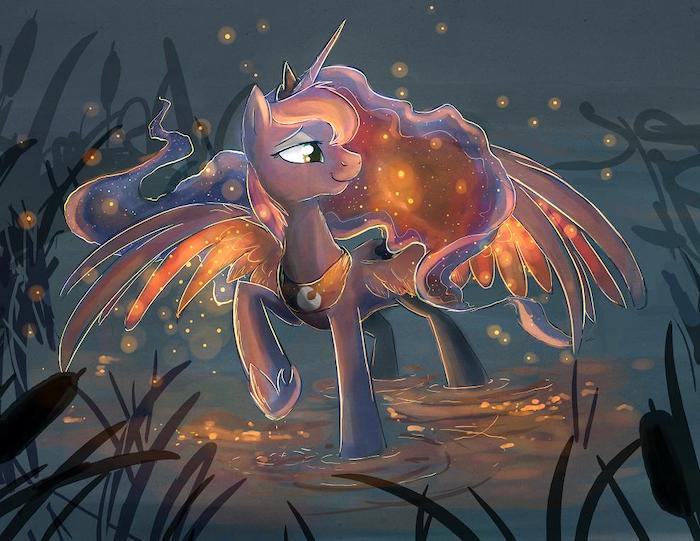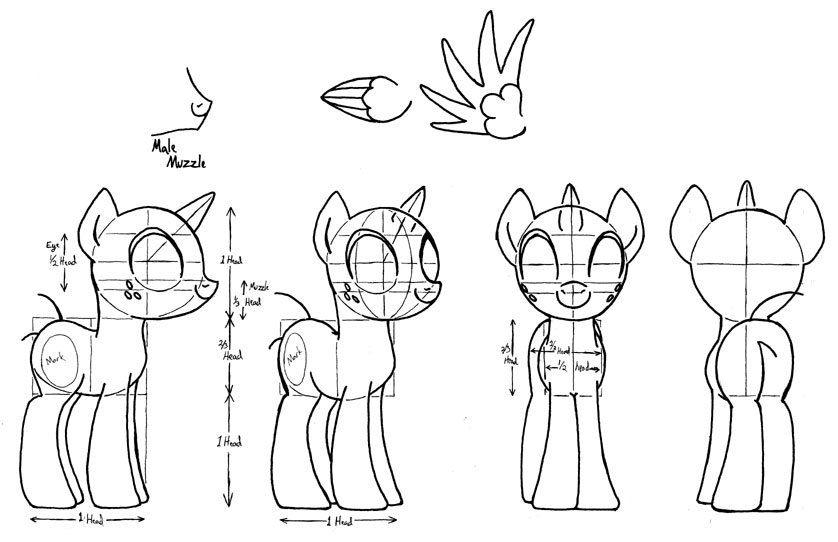 One more guide... for now.
One more guide... for now.There are a few things I've discussed around here and there's been an amount of frustration when I say something about art, only to contradict myself later. For the purposes of clearing things up, I've made this guide.
 This is hard... why do I have to do it?
This is hard... why do I have to do it? Learning, Rarity.
Learning, Rarity.Basic Rules
Dark to Light
Dark things come forwards in space. Light things go back. This doesn't mean you can't have darks in the back or lights in the front. It simply means that the overall impression of the things that are forward are darker than the things that are back. This how physics/light works in a landscape environment even at night. Thus our brains have evolved/adapted to this and perceive dark as forward and lights as further away. In general.
Big marks to small
Same as above, except with mark size. Exceptions are of course everywhere, from detailed marks to big flat things in front. But it is the overall impression that is important.
Saturated to not
Same as above two. How much color an object is is more in front, less as we go back in space and colors... well... see below.
Colors
Yes, they are a part of space. This will blow your mind. Colors blend together in a landscape or large spaced area. They are dependent on the environment around them for their light/color. This means that grass is not green, the sky is not blue and no, Luna is not blue either:

 But grass is green!
But grass is green! No! Bad Rarity!
No! Bad Rarity!Everything is dependent on the environment in which it's perceived. If the light is a deep red, things aren't going to look the same as they usually do.
General stuffs
Use References
I harp on this one a lot. You want to learn how a pony is put together? Draw from a reference. Doesn't have to be the same pose or pony, but the proportions, lines and relative placement are all there for you to take from and put into memory. However, if you want to draw from memory, you have to test the knowledge every once in a while. But this doesn't mean that references don't play a part. When you've drawn from memory, go back to a reference and compare the anatomy, proportions, angles, and placement. Then correct what you've done.
Shadows aren't just fuzzy
Shadows are very complex and people often depend on the fuzz of shadows to portray the depth and edge of a shadow when this does no good at all. When I say shadows aren't fuzzy I don't mean you can't fuzz them. I mean to understand shadows it makes more sense to work with hard edges so that you have to build up the edges and depth in another manner. Understanding this manner in addition to light/shadows in general will give you a comprehension of when to fuzz shadows and when not to.
Working from general to specific
This... is pretty much a law. If you're getting into the specifics of the eyes before even knowing your body's overall placement or the composition you're going for then mistakes are just waiting to be made. Going part to part, finishing one part before moving on to the next is a process that fails to compare. Your proportions, angles, scale, anatomy, placement are all independently made, thus when finally compared are off majorly.
Lurking and you can learn
This one is mildly true. But there are things that are just staring you in the face that a critic could point out to help, but you're just not up to posting. Don't worry – this is a learning environment. We don't expect you to be good or great or bad or want to change. But if you want to improve, post. Otherwise... You learn some, but other challenges will be mountains to you.
Proportions
There are a lot of set proportions out there on show-style ponies:

These are a good start, but by no means are they absolute. Perspective makes all the circles and lines of your undersketch change size and overlap and everything is very circumstantial. Try to understand the anatomy of your reference and its perspective. Solve it as a whole to figure out its individual parts.
"None of this applies to me" attitude
Many people like to skip or skim the guides or critiques. Others just read them. To truly study from them and take the most that you can, you have to work from them and along side them. To quote Fight Club "you are not a unique and special snowflake"
 I'm special.
I'm special. Yes you are Rarity, but...
Yes you are Rarity, but... I don't have to study.
I don't have to study. No studying?!
No studying?!Conclusion
Knowledge doesn't poof into your head and you aren't better without trying. People learn in different ways and rates, but in all of these ways there is a constant of practice and study. This doesn't mean you can't be awesome, in fact it means the opposite, that you will be awesome. As long as you keep submitting, practicing, and studying.
